Form, Use and Meaning
There are two forms for verbs called voice:
- Active voice
- Passive voice
The active voice is the voice that we use most of the time. You are probably already familiar with the active voice. In the active voice, we follow a straight forward
subject – verb – object structure. The object receives the action of the verb:
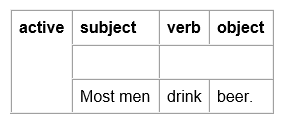
The passive voice is less usual and generally more common in formal, official or academic writing. In the passive voice, the subject receives the action of the verb:
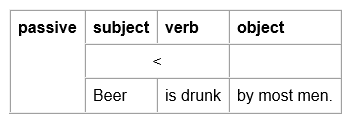
The object of the active verb becomes the subject of the passive verb:
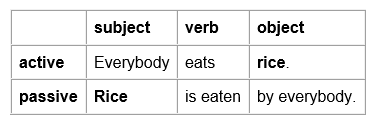
Construction of the Passive Voice
The structure of the passive voice is very simple:
subject + auxiliary verb (be) + main verb (past participle)
The main verb is always in its past participle form.
Look at these examples:
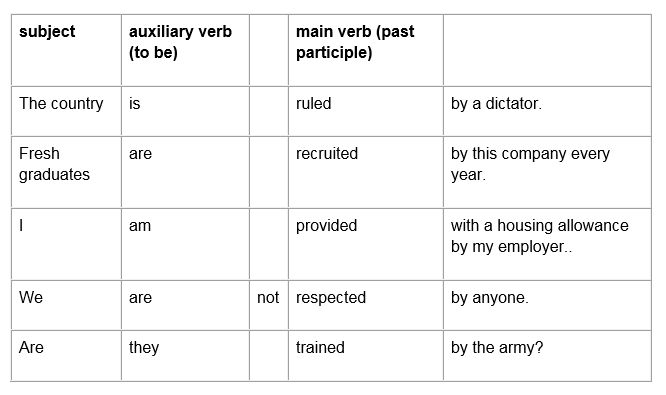
We use the passive when:
- we want to make the active object more important
- we do not know the active subject
- the active subject is obvious and does not need to be mentioned
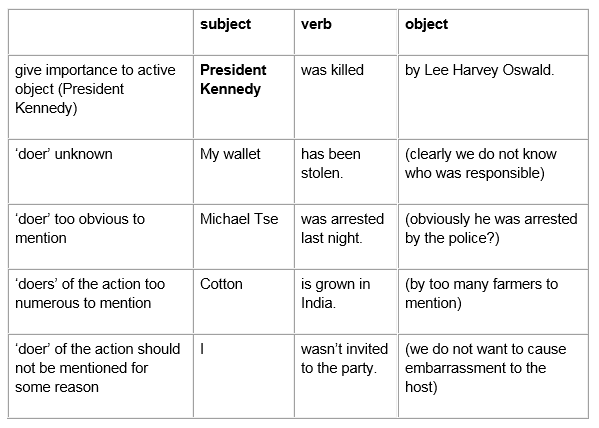
Note that we always use by to introduce the passive object
(Beer is drunk by most men).
But consider this sentence:
He was killed with an axe.
Normally we use by to introduce the passive object. But the axe is not the active subject. The gun did not kill him. He was killed by somebody with an axe. In the active voice, it would be: Somebody killed him with an axe. The axe is the tool or instrument. Somebody is the "agent" or "doer".
It is common to use passive structures in academic and official writing because in many cases, the agent (the ‘doer’ of the action) is sometimes less important than the action itself, or not known or more frequently irrelevant. The passive voice is also used in academic and official writing because it is:
- more distant (less personal)
- more objective
- more formal
Conjugation for the Passive Voice
We can form the passive in any tense. In fact, conjugation of verbs in the passive tense follows fairly standard rules as the main verb is always in past participle form and the auxiliary verb is always be. To form the required tense, we conjugate the auxiliary verb.
So, for example:
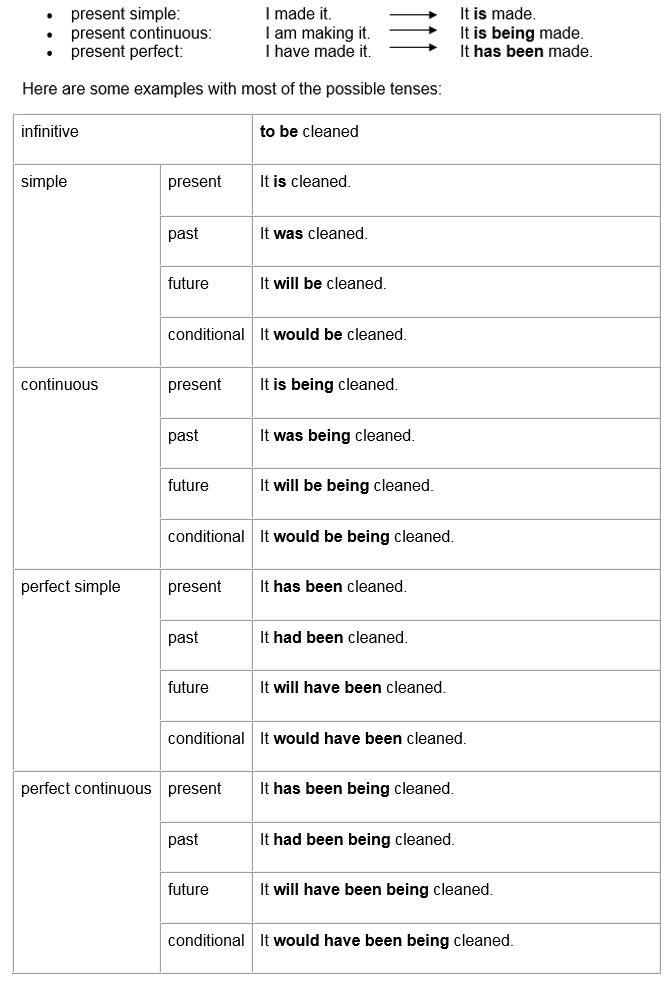
Stative and intransitive verbs
Consider this sentence:
He arrived in Beijing at 8.30 at night.
Can you rewrite this sentence in the passive voice?
The answer to this question is ‘no’ because passive structures are impossible with intransitive verbs (which do not take objects; e.g. arrive) as there is nothing to become the subject of the passive sentence, so…
Beijing was arrived at by him at 8.30 at night. INCORRECT
Stative verbs, which refer to states rather than actions, are also seldom used in the passive. Examples of stative verbs are : seem, have, suit and resemble.
Activity 1
Identify the correct sentences below :
Activity 2
Choose the correct voice for each of the sentences below.
Activity 5
Choose the correct active or passive form to complete these sentences.
Checking your progress.
Read the original paragraph and then complete the exercise below.
Original text
Another genetic variant means that some people are very sensitive to the smell and taste of coriander. For them, the green herb often found in curries and salads tastes like soap. According to Dr. Barry Smith, professor of philosophy and director of the Centre for the Study of the Senses at the University of London, we use all of our senses when we taste food. Smith explains, "you get the smell contributing and the touch, how smooth or creamy it is, and they all fuse together to give flavour." In other words, the intensity of a food's salty, bitter, or sweet flavor is dependent on the number of receptors working at the same time on our tongues.
The most important point to consider when deciding between a paraphrase and summary is what your goal is. If your writing needs supporting details, then a paraphrase is probably the best choice. If your writing needs to cover just the main ideas, then a summary is probably the best choice. Both paraphrasing and summarizing are effective when used appropriately.
To sum up. . .
When incorporating sources into your writing, be sure to attribute sources, to reorganize ideas, to reorganize sentence structures, and to substitute words.
Paraphrasing and summarizing have similarities, but they differ in the amount of condensing.
- Paraphrasing = a slight condensing of the original (with supporting details)
- Summarizing = a condensing of the original (just main ideas)
The key to successful paraphrasing and summarizing is to understand the text, write it in your own words, and check to make sure you have not changed the meaning.
Click the tabs to show contents.






